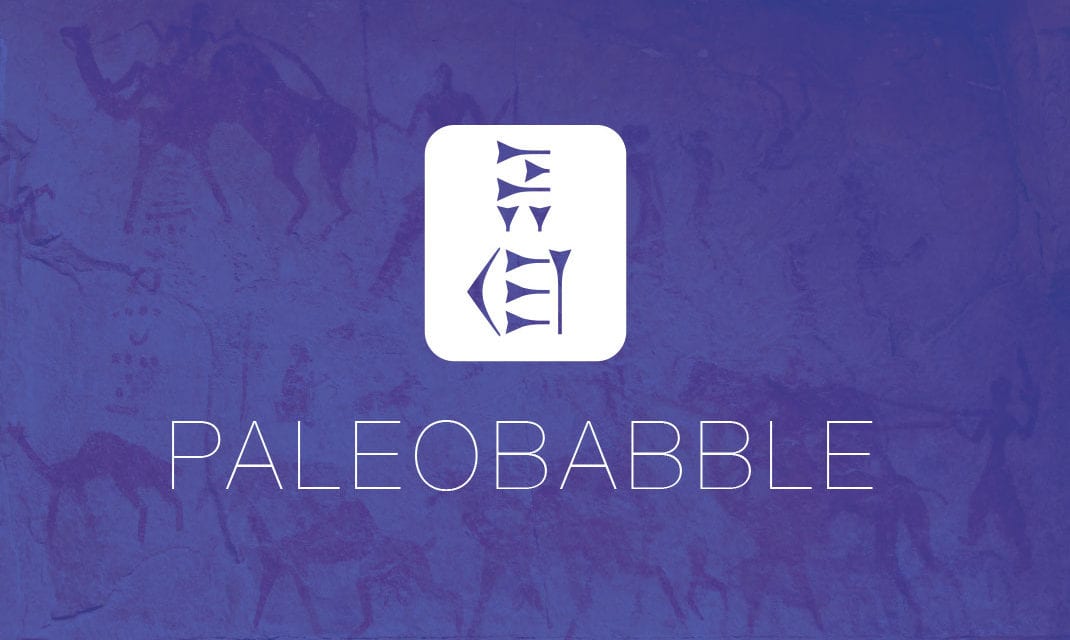I’m just reading James Tabor’s post regarding Prof. James Charlesworth’s apparent discovery of the name “Jonah” on the ossuary that purports to have a fish symbol on it. If that turns out to be a true inscription (looks pretty reasonable to me), then that would definitely help turn the discussion toward favoring a Jonah symbol on the ossuary. I’m wondering what Robert Cargill has to say on this since he has been over the photographs pretty thoroughly. Perhaps he will post something. But as I note in my response to Tabor’s other recent post on resurrection, a Jonah symbol doesn’t prove the tomb is a Christian one (but that isn’t integral to Tabor’s views on a “Talpiot complex” that contained the bones of Jesus). Still, this new discovery, presuming Charlesworth is parsing what he sees correctly, is just the kind of thing that I’ve been asking for: a data-driven argument, where the data aren’t easily co-opted by two or three other interpretations that seem more plausible. Stay tuned!
[Addendum: Turns out Robert Cargill did indeed comment on the alleged “Jonah” inscription: here and here. I’m still getting caught up on this one! The second post is much more substantive than the first, as it links to other criticisms of the inscription and offers its own plausible critique. Even more helpful is Mark Goodacre’s most recent post (less than fifteen minutes ago by the time of this addendum) on this new proposed inscription, which casts more doubt on it. Looks like this is another stalemate at best, but likely falling short of even that status due to the “broken nun” letter (at least to me). Incidentally, in the Goodacre post, take a look at the CGI composite image of the round blob that both Tabor and Jacobovici say is Jonah, or Jonah’s head, being spit out by the fish. It simply has no features of a head, face, or any other appendage that I can recognize. — MSH]
I’m a bit late on the above post because I’ve been writing a review of Tabor’s stimulating essay on early Jewish and Christian views of resurrection. That review is posted on another blog. Please have a look!







Thanks Michael. Not sure if you are on Facebook or if you are whether you are my “friend” but I just posted something on your response to my essay on your blog–which I was not even aware of. I look forward to exploring it further. My Facebook site is open so take a look: https://www.facebook.com/jamesdtabor
I appreciate your open mind on the YONAH inscription. Forget the “Jesus Tomb” or any other ancillary interpretations of our finds, let’s take one thing at a time. We definitely, absolutely, have here a fish with the name JONAH…so the crazy discussion the past six weeks, with all its personal slander and vituperative style, has been a real waste of time. What we need to discuss are the implications of such an image in any tomb of this period, much less this one. I stand ready to do that and hope you will join me. See my latest blog post on this: http://jamestabor.com/2012/04/19/inscription-on-the-jonah-image-says-yonah/
You don’t need to worry about what Cargill says since he has already likened this clear inscription to the straight painted lines on a 3rd century CE black painted krater-vase. Others also jumped in without thinking and even trashed Charlesworth in the process. I respect your ability to stand for a bit of integrity here. Let’s take a look and honestly see what we have. Would it not be a horrible shame if we missed this, after all–a Jonah symbol, the first ever, in a Jerusalem Herodian period tomb?
I just read through Cargill’s pieces; that illustration didn’t make sense to me. The broken “nun” does, though. Goodacre’s post with the CGI image seems pretty clear that there’s a break there. Kind of frustrating. But I just don’t see “Jonah” in the blob, though, as you know. I wish the whole thing could be revisited (another round of pictures, that sort of thing).
I’m on Facebook, but don’t use it much. I find it confusing. I really like Twitter, though — no clutter! I’m following you now on Twitter.
“You don’t need to worry about what Cargill says…”
agreed, no need to worry at all. just dismiss out of hand and ignore. there is no other possible explanation for the lines at the bottom of the vessel. just choose the lines that suit your argument, ignore the lines that don’t, and pretend the lines you need to connect actually connect (even though in their OWN drawings they do not – see goodacre’s post).
see michael, if you just ignore and dismiss people and facts that don’t suit what you want to believe, the world is much simpler… 😉
You don’t know me very well, Bob! I’ve never done that (a fact that gets me into trouble many times). I don’t follow James’ take on the inscription or the symbol (but I will admit that your vase illustration didn’t do much for me — but the broken nun has weight in my view).
I just put up a photo with different light and I think you will see the Nun is not broken, take a look, on my blog: http://jamestabor.com/2012/04/19/inscription-on-the-jonah-image-says-yonah/
As Zuckermann, Charlesworth, and others have shown us you have to take photos from various angles, with different lighting, to see all the features of scripts, and this is especially true with artifacts and items such as ossuaries.
I’ll have a look. The “name” though appears clumsily jumbled with “extraneous” lines. Kind of odd if it’s a name (i.e., why not be clearer and avoid marring the artistic work?)
This picture looks like it has a nun intact. Any idea why the nun orientation would be correct but the inscriber couldn’t get the waw orientation correct? I don’t see any curvature at the top of what would be the waw toward the correct direction. (True, a lot of these inscriptions are fairly sloppy — but it’s odd that one letter is correctly oriented and not the other).
MIchael, I think the key the both the images on the “Jonah” ossuary and the one next to it with the four line Greek inscription is the text of Jonah 2: 2-7, in Hebrew put particularly in Greek. There you have all the elements: Jonah in Sheol/death, passing through the gates or bars of death, the cry to God/YHVH to lift him up, the seaweeds around the head, and the vision of the Temple. It is all there. Mystically, among early Christians, this became the “sign” of Jesus’ lifting up, sitting at the right Hand of Power, “rebuilding” the Temple of his body in three days, etc. It is an amazing discovery, with or without Talpiot tomb A. I will discuss our differing views of that “body” in another place, but you get the idea here. I think the engraver had the text in his head and faith in Jesus in his heart, and he puts down something he then imagines, and that is why it has no parallels. It is coded: Jesus=Jonah, and all that that came to mean to these circles of Jews who believe in heavenly ascent and enthronement.
Agreed. If it’s a name the concatenation of items would make sense, though I doubt if I’d ever think the blob was Jonah — I’d like something that looked remotely human in place of the blob. But in any event, this doesn’t say “Christian” to me at all. It says “hey, here lies a Jew that had a sound knowledge of his OT Sheol imagery, and a hope in resurrection.” There’s really nothing distinctly Christian about it. How later Christians used it doesn’t overturn the fact that earlier Jews saw the same meaning in it. And it isn’t like Second Temple pre-Christian Jews didn’t believe in heavenly ascension at the right hand of God. I’m quite familiar with the two powers in heaven material.
My oh my Dr. Mike you’ve certainly been busy. I’m especially looking forward to reading what you’ve written about James Tabor’s resurrection. Thanks for hooking me up and keeping on top of the tomb story. Peace, Eric.